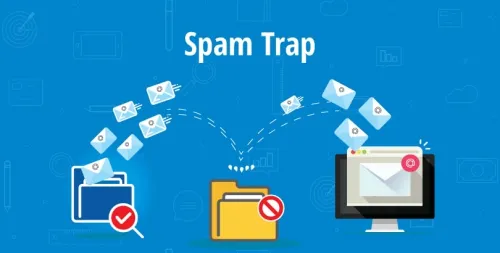In the intricate world of email marketing, one of the most elusive yet significant challenges that marketers face are spam traps. These hidden hazards can derail even the most meticulously planned email campaigns, leading to decreased deliverability and potential harm to a sender's reputation. Understanding what spam traps are, how they work, and how to avoid them is essential for any digital marketer. This article aims to demystify spam traps and provide actionable strategies for steering clear of these invisible threats.
1. Understanding Spam Traps
Spam traps are email addresses used by internet service providers (ISPs) and blacklist providers to identify and catch spammers. They are not regular email accounts; they don't belong to real users and typically don’t engage in regular email activities. They come in various forms, including pristine traps (created solely for catching spammers) and recycled traps (old, abandoned email addresses repurposed as traps).
2. The Risks of Hitting a Spam Trap
Landing in a spam trap can have serious consequences for your email marketing efforts. It can lead to a tarnished sender reputation, reduced email deliverability, and even blacklisting by ISPs. This means your emails, including legitimate ones, could end up in spam folders, drastically reducing your campaign's effectiveness.
3. How Spam Traps End Up in Your Email List
Spam traps can find their way into your email list in several ways. Common causes include purchasing email lists, poor list hygiene practices, and lack of re-engagement strategies for inactive subscribers. Sometimes, even well-intentioned marketers can inadvertently capture a spam trap, especially if they are not vigilant about their email list sources and maintenance.
4. Best Practices to Avoid Spam Traps
- Avoid Purchasing Email Lists: Purchased lists are notorious for containing spam traps. Always build your email list organically to ensure quality and consent.
- Regularly Clean Your Email List: Regularly remove inactive subscribers and bounced email addresses. This practice not only helps in avoiding spam traps but also improves overall engagement rates.
- Implement Double Opt-In: This method involves sending a confirmation email to new subscribers to verify their intent to join your list. It ensures that you are only adding valid and interested email addresses.
- Monitor Engagement Rates: Keep an eye on your engagement metrics. Low engagement rates over time can be indicative of potential spam traps in your list.
- Use a Reputable Email Service Provider (ESP): A good ESP will have mechanisms in place to help you avoid spam traps and maintain a healthy email list.
5. Recovering from a Spam Trap Hit
If you suspect that your email list has hit a spam trap, act quickly to mitigate the damage. Clean your email list, removing any suspicious or inactive addresses. Review your email acquisition and engagement strategies. It may also be wise to consult with an email deliverability expert to guide you through the recovery process.
6. The Role of Email Authentication Protocols
Implement email authentication protocols like SPF, DKIM, and DMARC. These protocols validate your emails and help ISPs in distinguishing legitimate emails from spam, thereby reducing the chances of your emails being flagged.
Conclusion
Navigating the world of email marketing requires vigilance against various challenges, with spam traps being one of the most significant. By understanding what spam traps are and how they work, marketers can take proactive steps to avoid them. Maintaining a clean, organically grown email list, engaging in best practices for list hygiene, and using robust email authentication methods are key strategies in steering clear of these invisible threats. In doing so, marketers can protect their sender reputation and ensure the success of their email campaigns.



